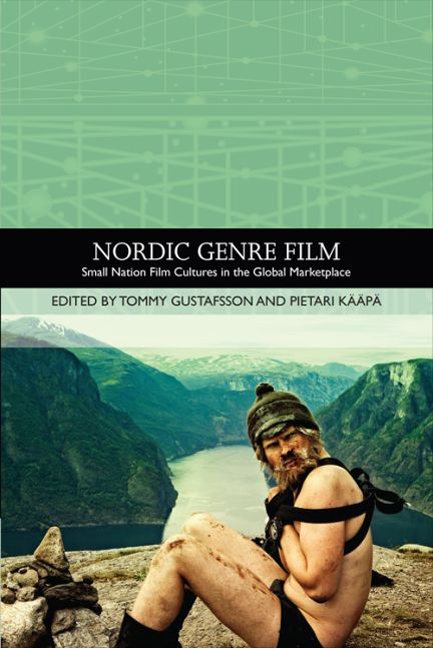Book contents
- Frontmatter
- Contents
- List of Illustrations
- List of Contributors
- Traditions in World Cinema
- Introduction: Nordic Genre Film and Institutional History
- PART I HERITAGE CINEMA AND NATIONAL NARRATIVES
- PART II CRIME AND DETECTIVE NARRATIVES
- PART III NORDIC OPTIMISM: ROAD MOVIES, COMEDIES AND MUSICALS
- PART IV NORDIC HORRORS
- PART V GENRE BENDERS
- Index
Introduction: Nordic Genre Film and Institutional History
Published online by Cambridge University Press: 25 October 2017
- Frontmatter
- Contents
- List of Illustrations
- List of Contributors
- Traditions in World Cinema
- Introduction: Nordic Genre Film and Institutional History
- PART I HERITAGE CINEMA AND NATIONAL NARRATIVES
- PART II CRIME AND DETECTIVE NARRATIVES
- PART III NORDIC OPTIMISM: ROAD MOVIES, COMEDIES AND MUSICALS
- PART IV NORDIC HORRORS
- PART V GENRE BENDERS
- Index
Summary
The demand for all areas of Nordic film and television culture outside the borders of the Nordic countries may come as no surprise. The popularity of television shows such as The Killing (Forbrydelsen, 2007) and The Bridge (Bron|Broen, 2011) both domestically and internationally have increased the profile of Nordic media while the crime novels of Henning Mankell and Stieg Larsson have penetrated the American market – the barometer for global commercial ‘relevance’. The Guardian in the UK has published several articles on the craze, noting how the protagonist of the original Danish version of The Killing, detective Sarah Lund, has become an unlikely fashion icon with her knitted sweaters. While a certain type of Nordic film – the existential artistry of a Dreyer, a Bergman or a Kaurismaki – has existed at the periphery of this global consciousness, such perceptions are clearly shifting as the contemporary situation seems to be more characterised by Nordic contributions to global popular culture instead of the more traditional frameworks of artistic or experimental relevance. How did we get to this situation? In short, how did the media products of this small region of the world become part of global popular culture?
In order to understand the international emergence of the Nordic media of the twenty-first century, we must turn to the ‘revival’ of the Nordic film industries in the late 1990s and early 2000s. Specifically, we must focus on the history of the Nordic genre film and its relationship with governmental support and film institutes. Previous international scholarship on Nordic cinemas has been carried out through a dense focus of art house cinema, often with a small number of auteur films with international distribution as its preferred examples (see, for example, Hardy 1952; Cowie 1992; Thomson 2006). This institutionalised history is largely based on the concept of film as a national art cinema, a concept that relies on a sharp contrast with Hollywood's fordianesque output of genre films. The notion of the national art film is so prevalent that a historical dictionary on Scandinavian cinema published in 2012 states as fact that ‘the production of genre film was sparse and, instead, a production of art house films and social problem films was favored’ during the period from 1960 to 1990 (Sundholm et al. 2012: 3).
- Type
- Chapter
- Information
- Nordic Genre FilmSmall Nation Film Cultures in the Global Marketplace, pp. 1 - 18Publisher: Edinburgh University PressPrint publication year: 2015



